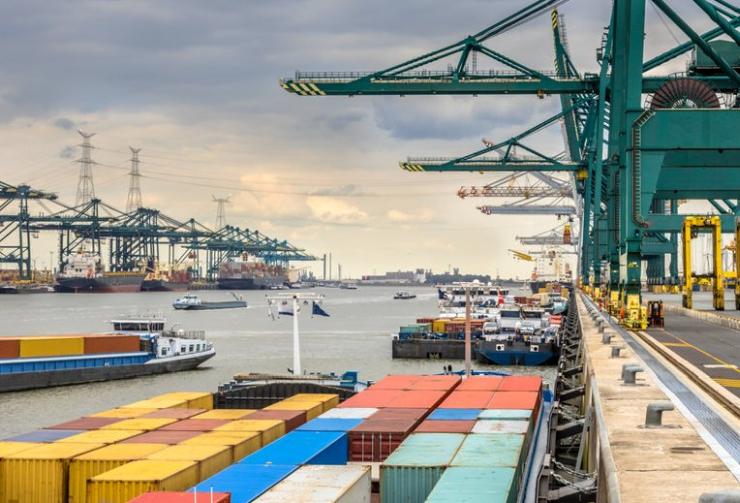Europol: How Organized Crime Groups Infiltrate the Ports of Europe.

Of the 90 million containers that find their way through EU ports every year, law enforcement is able to physically inspect only two percent. This, combined with the criminal tricks, makes it almost impossible to detect the enormous amount of illicit goods that enter the continent through ports, according to a new Europol report.
The police agency released its analysis of the challenges law enforcement face in protecting the EU’s ports from criminal networks, who seek to exploit the continent’s shipping hubs to traffic hundreds of tonnes of narcotics across the world.
The report, released jointly with the Security Steering Committee of the ports of Antwerp, Hamburg, Bremerhaven, and Rotterdam, examines the ingenuity employed by transnational crime groups to bypass authorities and smuggle their product across Europe’s transport system.
The freedom of movement granted within the Schengen Area has become part of the European way of life; highways, railways and ports connect cities across 27 countries, for goods as much as for people.
Once infiltrated by crime groups, however, these same interconnected shipping networks become a boon for illicit transnational enterprises such as drug smuggling. And the ports are the infiltration point.
The sheer volumes of shipments they process, and connectivity with the surrounding areas make them an attractive avenue for transporting illicit merchandise across the European market.
Add in the fact that criminal organizations can identify who at the ports can facilitate their goods getting processed as fluidly as possible, and one can see how authorities don’t really even have a chance.
Select corrupt officials, who have access to the proper logistics and shipping manifolds, can label which containers are to be inspected and which are to be waved through. Essentially, routes exiting the ports are pre-selected for which have a greater chance to be searched, or none at all, given the lack of proper manpower. These are referred to by criminals as ‘green lines’, Europol said.
“Criminal networks work closely to evade security at land borders and at air and maritime ports. They have one thing in mind – profit,” said Europol’s Executive Director Catherine De Bolle.
As for the trafficking of the drugs itself, there are several modi operandi used to ingeniously conceal them, and no lack of creativity when one authorities get wise to one particular method.
For example, after a container is processed through a routine scan by customs, its registration info is copied and placed onto a replica, thereby allowing it to evade inspections.Europol estimates that no less than 200 tonnes of cocaine have successfully been trafficked through the ports of Antwerp and Rotterdam in the past few years thanks to misappropriated container reference codes.
Another example is the more standard “the rip-on/rip-off method.” In the port of departure, the narcotics are concealed in the container, in a place that is easily accessible.
The drugs are then transported along with the goods from a legitimate receiver/importer, who is often unaware of the situation.
Once the container reaches its destination, the drugs are retrieved in or just outside the port by extraction teams. And transnational crime groups do not just target select personnel at a single port, Europol said. Forming a network of corrupt support coordinators in multiple locations “allows the criminals to be flexible in changing their routes depending on control measures or risks to the shipments.”
Corrupting multiple workers also allows them to have people in place to pick up the slack and ensure a continuance of operations should one be discovered and arrested. They can come from several areas within the ports, including shipping agents, terminal officers, transporters, and even law enforcement and customs officials.
But the most expensive is the “essential links in the extraction chain,” workers such as crane operators and those with access to IT systems. Those in charge of extracting the drugs from the ports can receive “between 7 to 15 % of the value of the illicit load,” Europol said.
In order to combat this continental-wide problem, Europol recommends the development of legislation that would streamline security measures across all ports in Europe. “Implementation of such measures at the European level,” the report concluded, “will ensure a level playing field, avoiding competition at the cost of security.” (Photo: A lot of automated cranes at the busy port terminal in Antwerp. 123rf.com/creativenature)
Henry Pope



